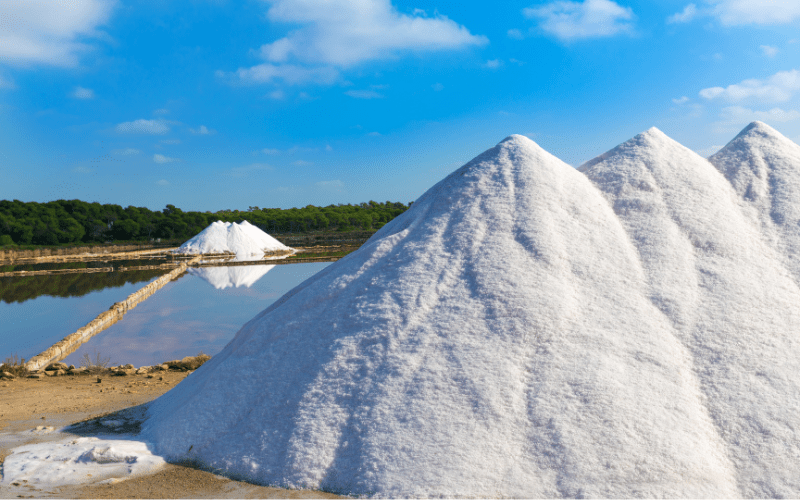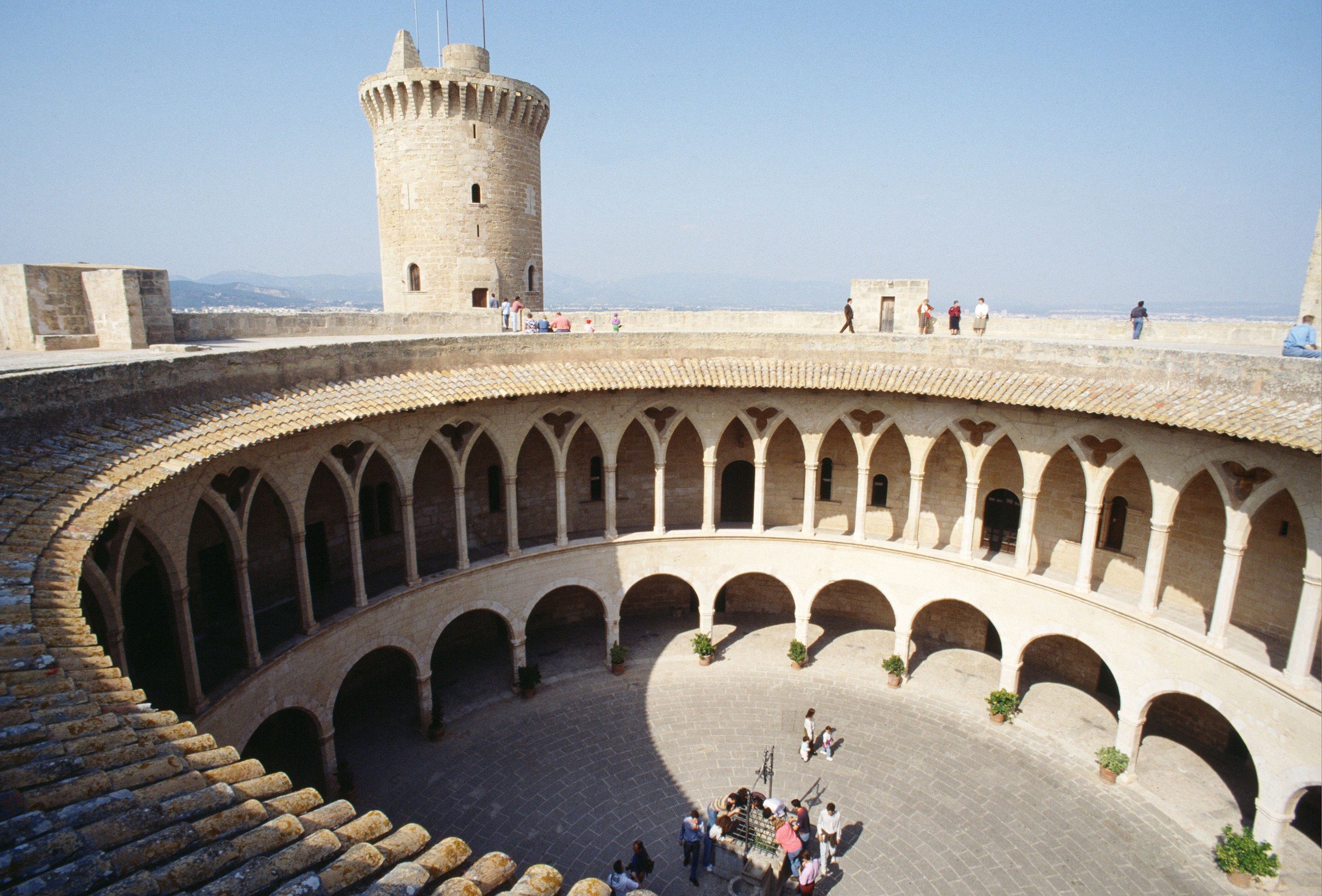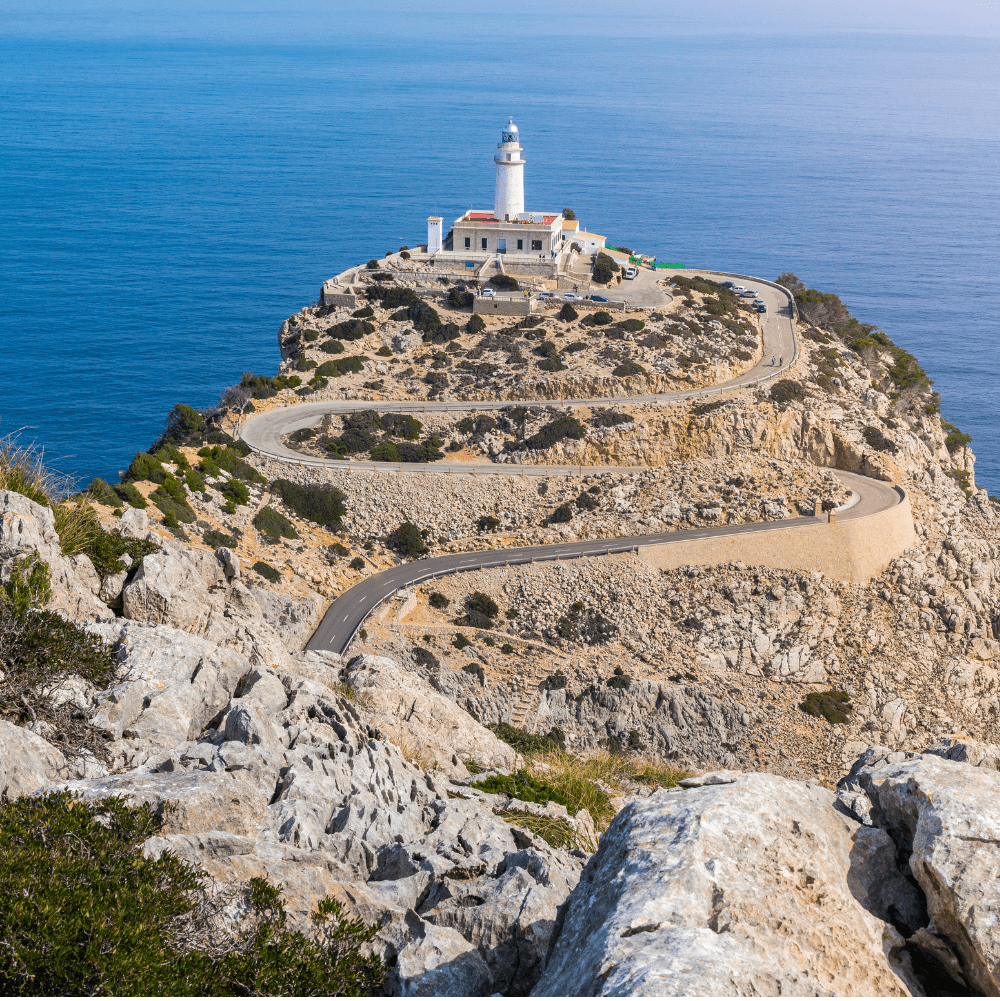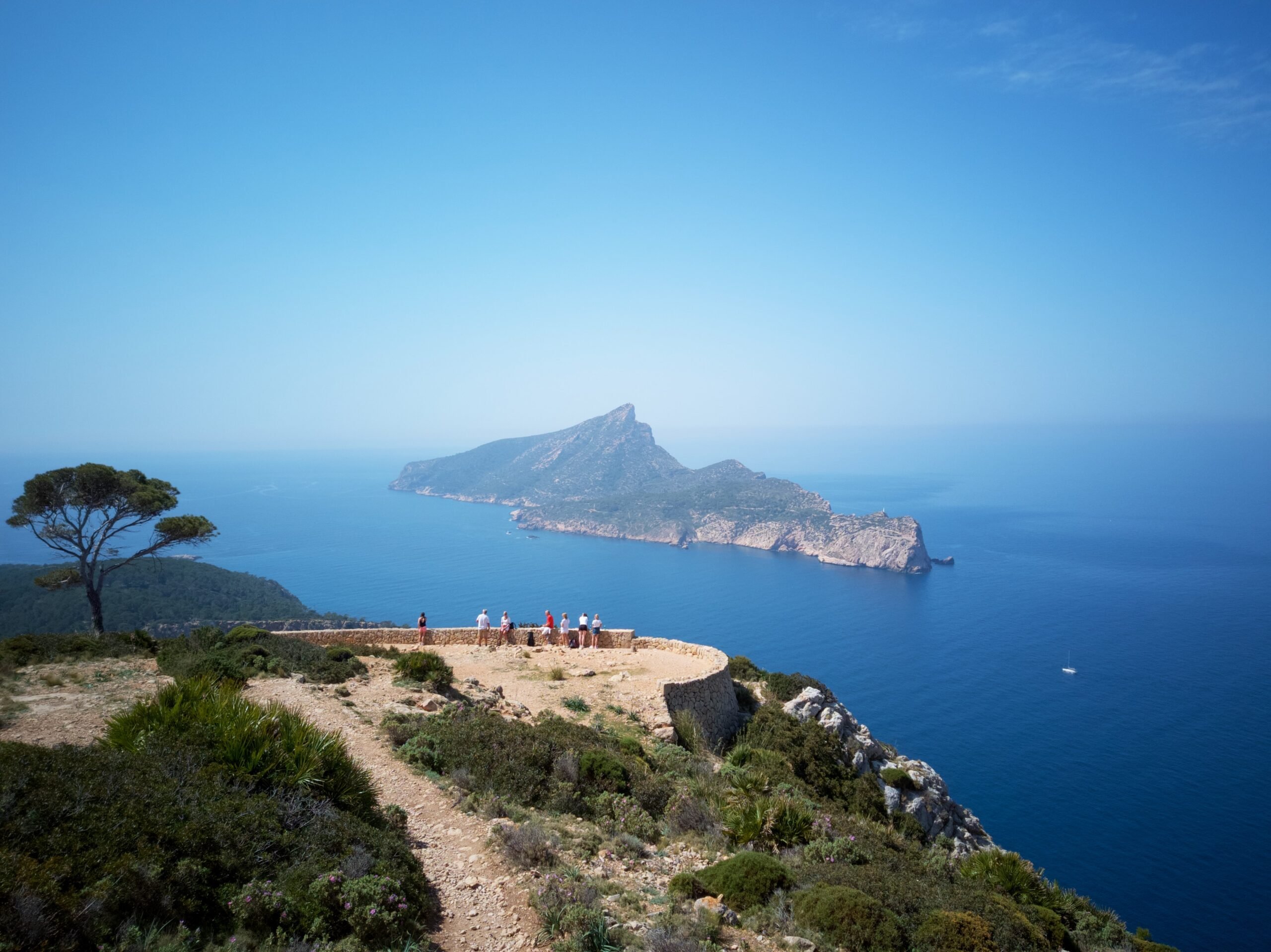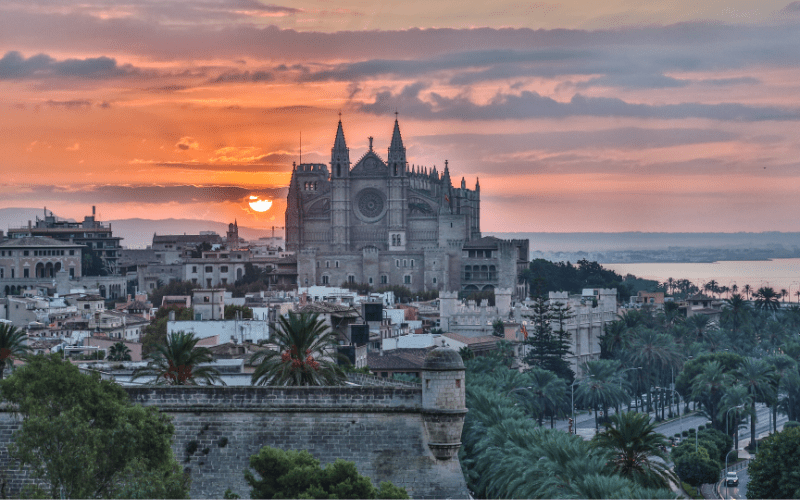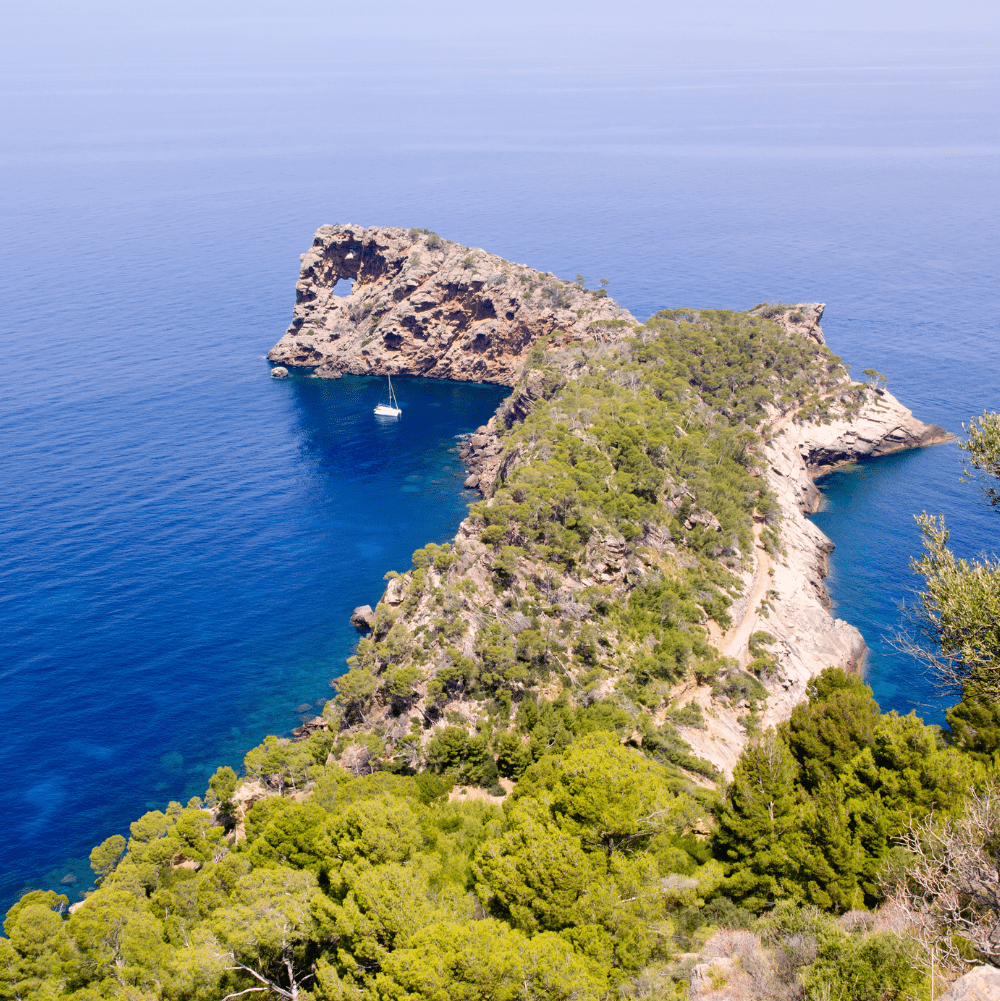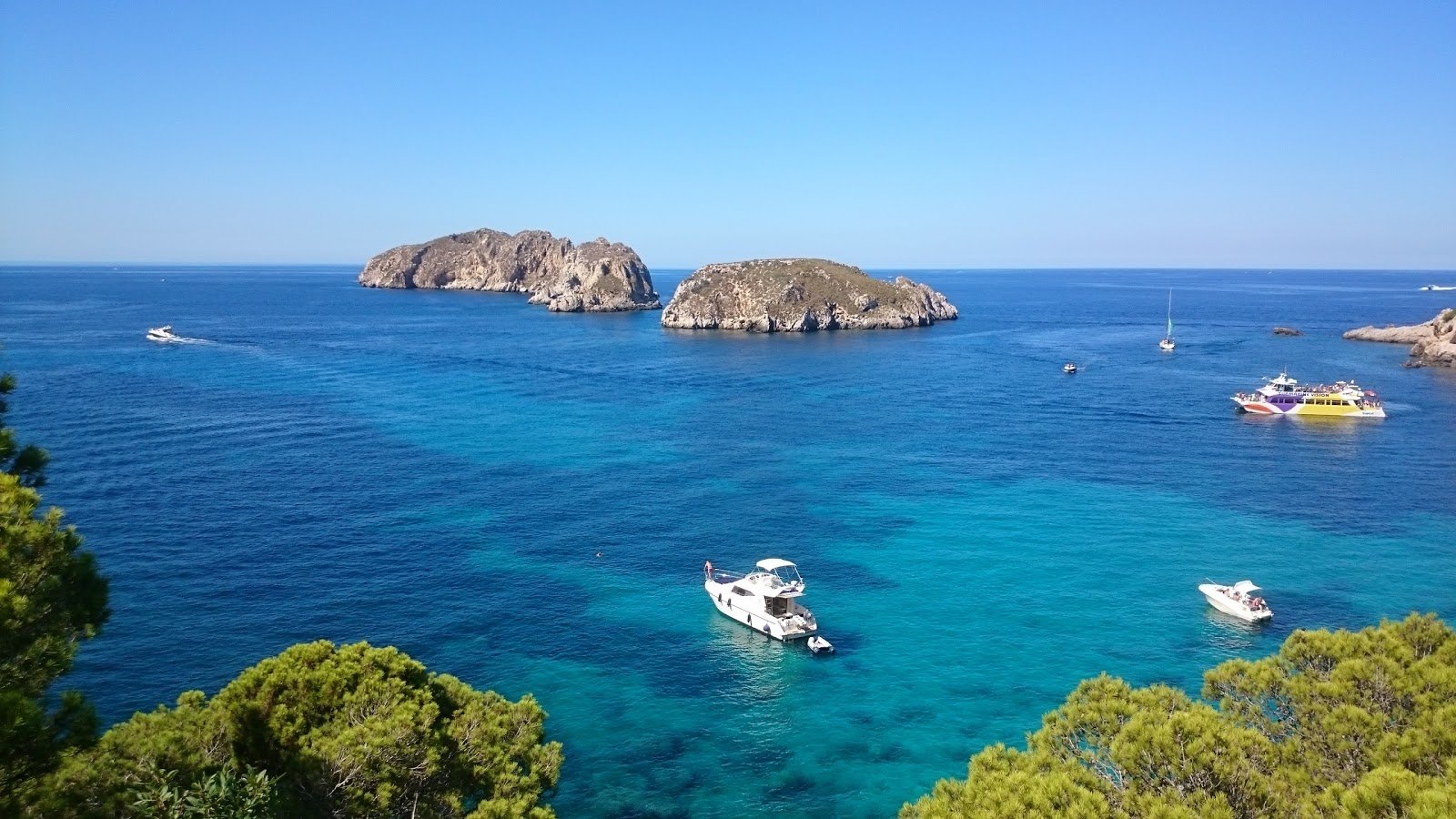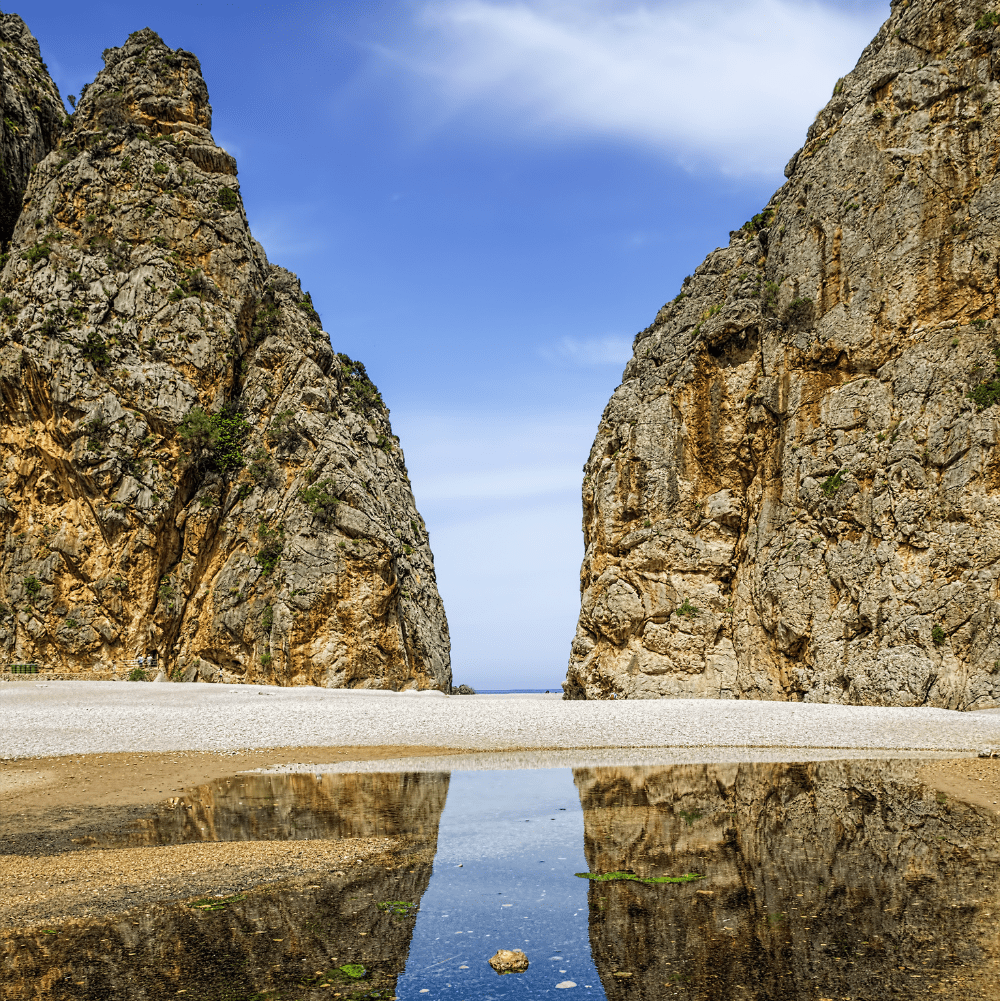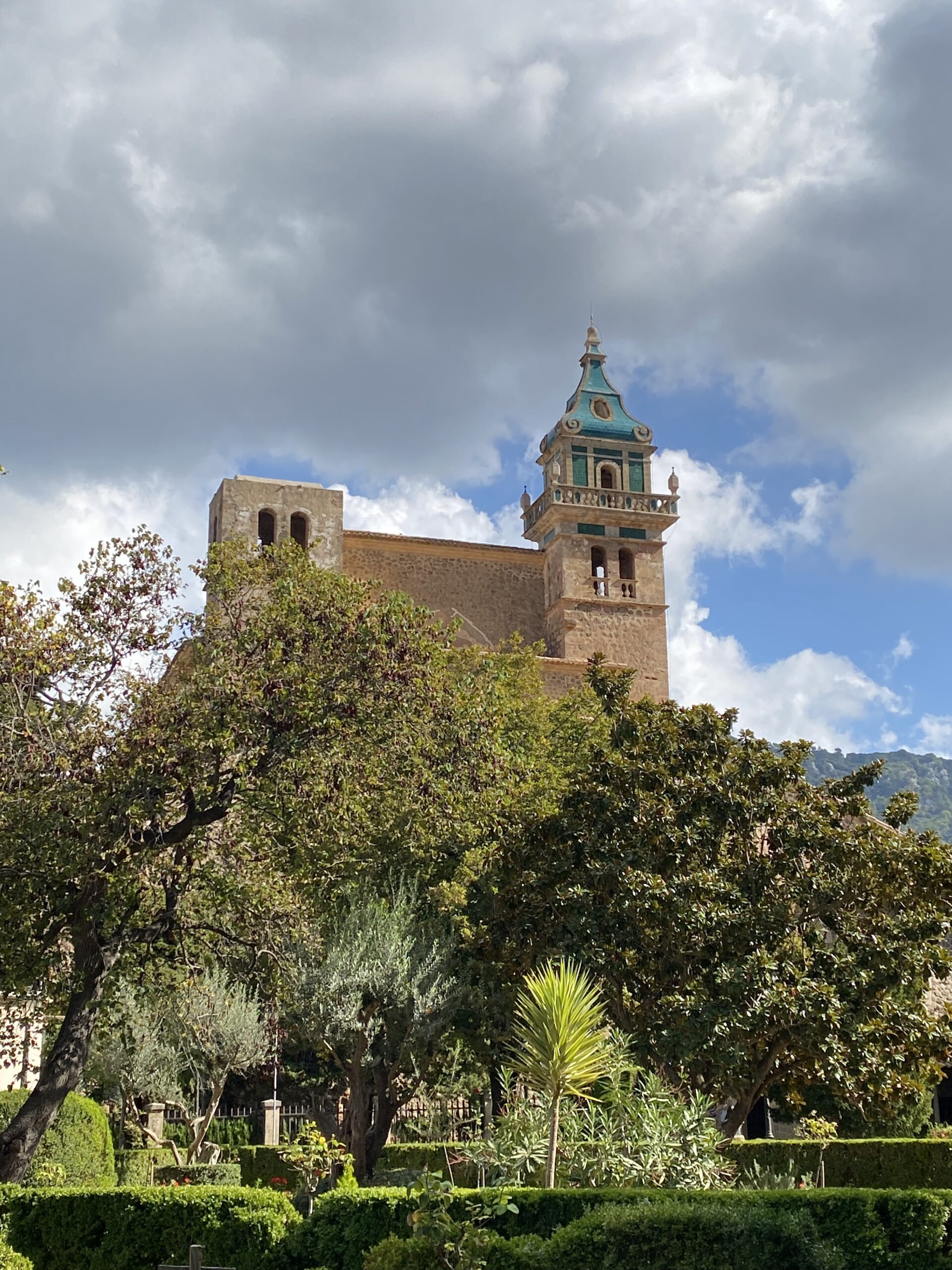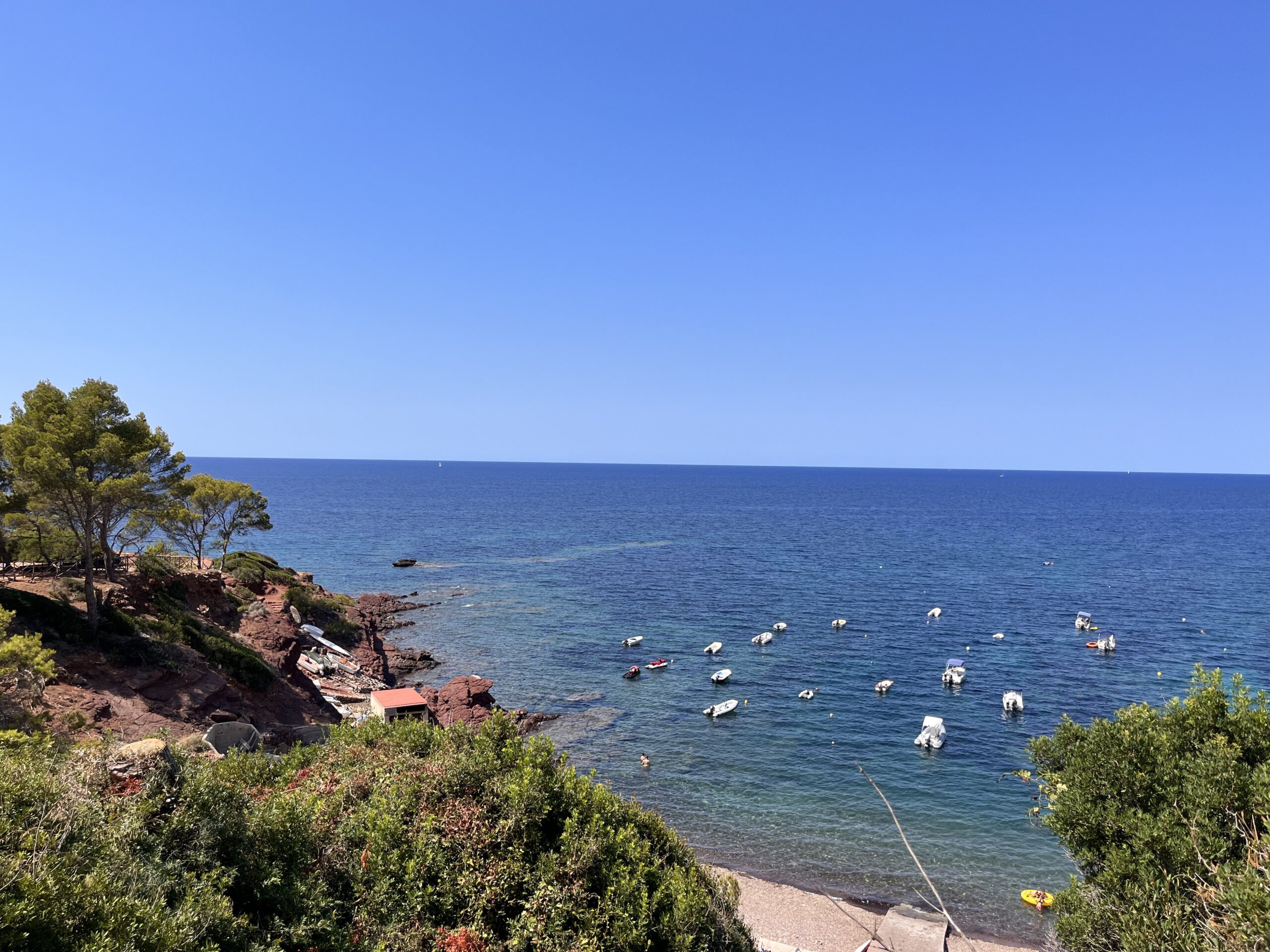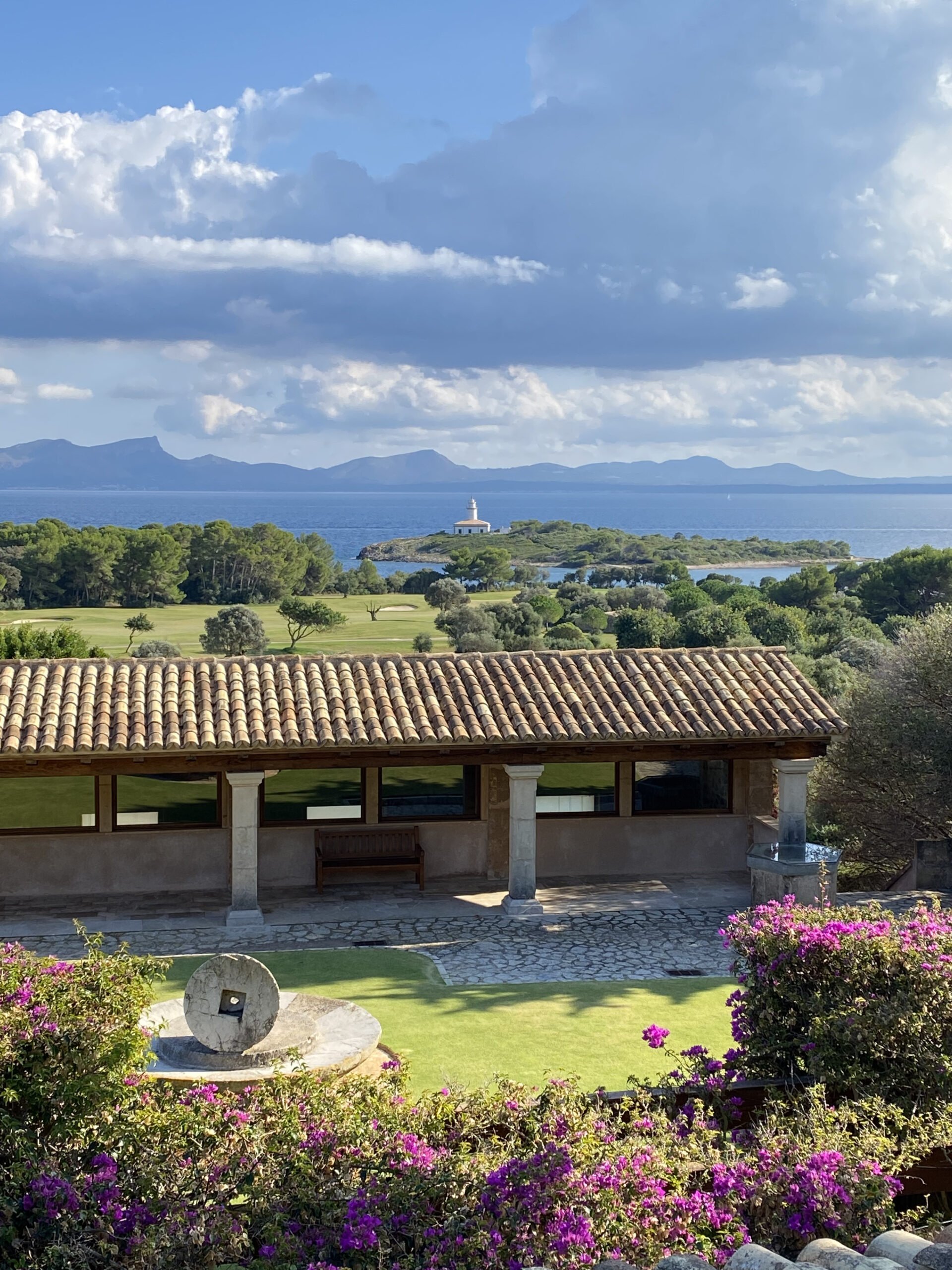Culture and nature
SALINERA D’ES TRENC
For centuries, men and nature have shaped the dreamlike landscape of the Salines d’Es Trenc in the south of Majorca. The Levante salt lakes were renovated in the 1940s and 1950s, and since then traditional techniques have continued to be used, feeding on the Mediterranean waters that flow from the natural area of the Es Trenc beach. It is one of the best preserved areas of the island, thanks to its declaration of Natural Area of Special Landscape and Rural Interest.
CASTELL DE BELLVER
Located 3 km from Palma city centre and 112.6 m above sea level, Bellver Castle was built at the beginning of the 14th century in the Gothic style, with an original circular plan. In addition to the old offices of the Kings of Mallorca, the visit includes the City History Museum, a collection of classical sculpture and what once was the cell of enlightened politician and writer Gaspar Melchor de Jovellanos.
FARO DE FORMENTOR
Inaugurated in 1863 as part of the installation of various light signaling points in Majorca, the Formentor Lighthouse was the one that presented the most difficulties due to its location. Located in the north end of the island, it is found in one of the most wild and isolated places; which, on the other hand, offers you the highest focal plane in Majorca and impressive views.
SA DRAGONERA
Although it may look like a sleeping dragon on the horizon, Sa Dragonera doesn’t take its name from its resemblance to the reptile. However, the island is a vestige of a still wild Majorca. You will come across a coastal landscape that evokes colonisation and piracy times, a geological fossil that, as an extension of the Sierra de Tramuntana, is home to one of the spots of greatest environmental relevance in the Balearic Islands.
LA SEU - MAJORCA CATHEDRAL
The Majorca Cathedral or La Seu, built between the 14th and 16th centuries, is the quintessential jewel in the crown of Majorcan Gothic architecture. It is also home to important works of art from different periods (Gothic, Renaissance, Baroque and Contemporary).
The Cathedral has had many admirers. Amongst them, painter and writer Santiago Rusiñol, who often traveled to Majorca and admitted he was truly in love with the island. He ended up getting to know it well and, in 1912, he dedicated his book The Island of Calm to Majorca. In the book there is a chapter dedicated to the Cathedral of Majorca, of which the artist said that there was no other temple that had achieved such beauty with greater simplicity.
SA FORADADA
We could say that the most famous viewpoint on the island is Sa Foradada, one of the most symbolic and photographed landscapes in Majorca. It’s a small peninsula with a large rock at its end, which has a hole 18 meters in diameter. It is the place to be if you want to enjoy the most spectacular and romantic sunsets.
ILLES MALGRATS
The Malgrats islands are made up of two islets: the largest is called Es Malgrat, with an approximate length of 2 kilometres and cliffs over 60 metres high, and the other one, considerably smaller –less than half a kilometre long and 30 metres high– but no less important, receives different names by locals: Ses Rates, des Conills or d’Enmig. The islands are located in the municipality of Calvià, in front of the Santa Ponça bay.
TORRENT DE PAREIS
Take our word for it: this is the most spectacular cliff within the Sierra de Tramuntana. Torrent de Pareis is a 3 km long canyon surrounded by high calcareous rock walls. It begins in s’Entreforc, where it meets two other streams, Lluc and Gorg Blau, and it flows ontothe beautiful Sa Calobra beach. It was declared a Natural Monument back in 2003.
ES PONTÀS
You must go south to discover another of the island’s unmissable spots. We are talking about Es Pontàs, a large natural rock shaped like a bridge (or an arch, depending on how you look at it) located in the municipality of Santanyí, between Cala Santanyí and Caló des Macs. This photogenic geological formation is located in a pleasant coastal area with pine trees and cliffs facing the Mediterranean Sea. This natural monument is the result of hundreds of years of wave pounding, which has given us one of the most beautiful natural arches in the Mediterranean. So, if you are visiting the south of Majorca, don’t miss the chance to make a stop in Es Pontàs.
CARTUJA DE VALLDEMOSSA
The architectural ensemble included in the Real Cartuja de Valldemossa dates back to the 14th century. The visit includes the Neoclassical church, the cloister that was part of the building’s old core, the gardens and the priory cells, where the historical and artistic legacy of the Carthusians is kept.
Throughout its history, the ensemble has attracted many distinguished figures, including Frédéric Chopin and her partner George Sand, who stayed between 1838 and 1839. It is one of the town’s main tourist attractions.
PORT DES CANONGE
Port des Canonge and its beach is located next to the town of Banyalbufar, in the heart of the Serra de Tramuntana, on the north coast of Majorca. For decades, this small pebble cove was used as a dry dock for small fishing boats.
It has really lovely surroundings, as in the nearby Port de Valldemosa cove. The high mountains that surround the beach stand out. Local residents usually visit this cove. It is a perfect place for diving lovers due to its rocky bottom. Nearby are the towns of Banyalbufar, Esporles and Valldemosa.
AUCANADA
Alcanada –or as we say in Majorcan “Aucanada”– is a pleasant coastal spot located at the northern end of the Alcudia bay, northeast of Majorca. Its unfrequented pebble beach makes it quite the attraction since it lays far away from the main hotel areas. It’s an ideal place to walk, go for a swim or simply sit by the sea under the shade of the trees.
Something we love? Its privileged location, which allows us to enjoy on one hand the fabulous views of the Alcudia bay and on the other the small Alcanada island and its lighthouse.


